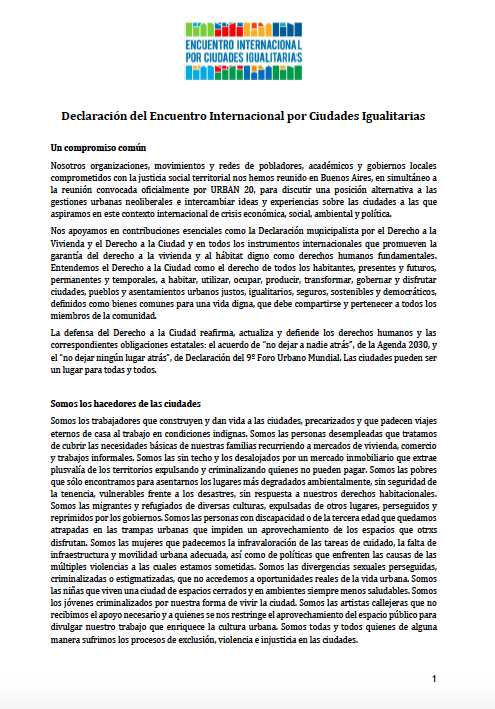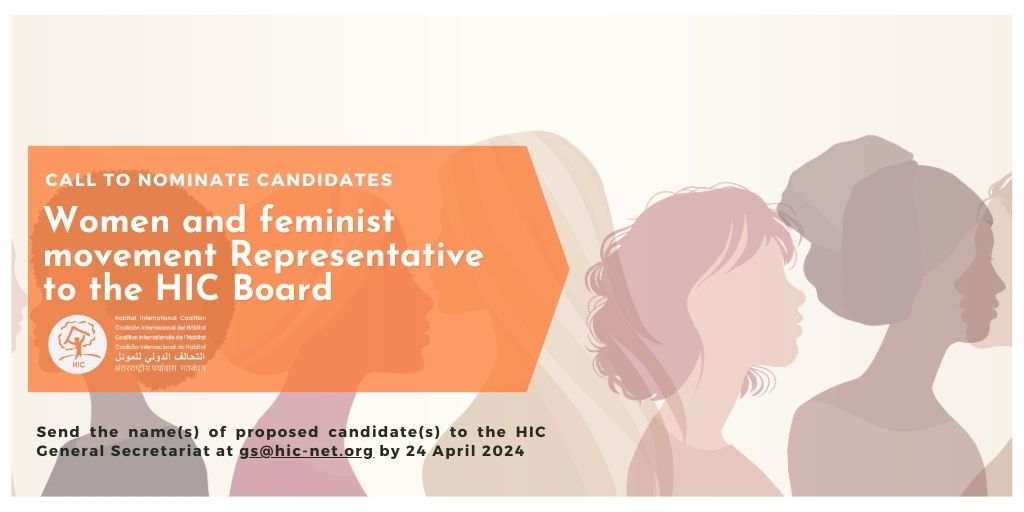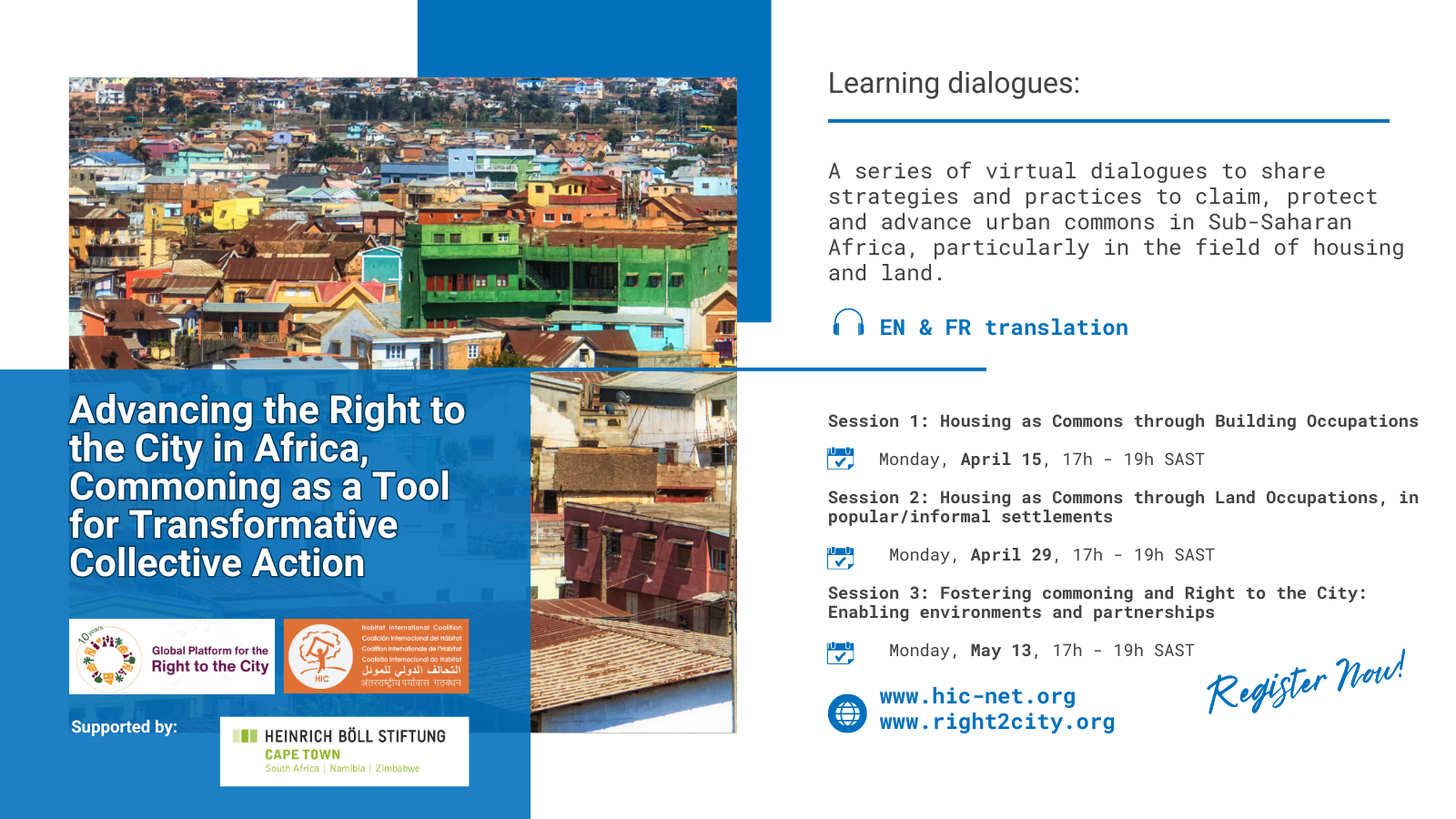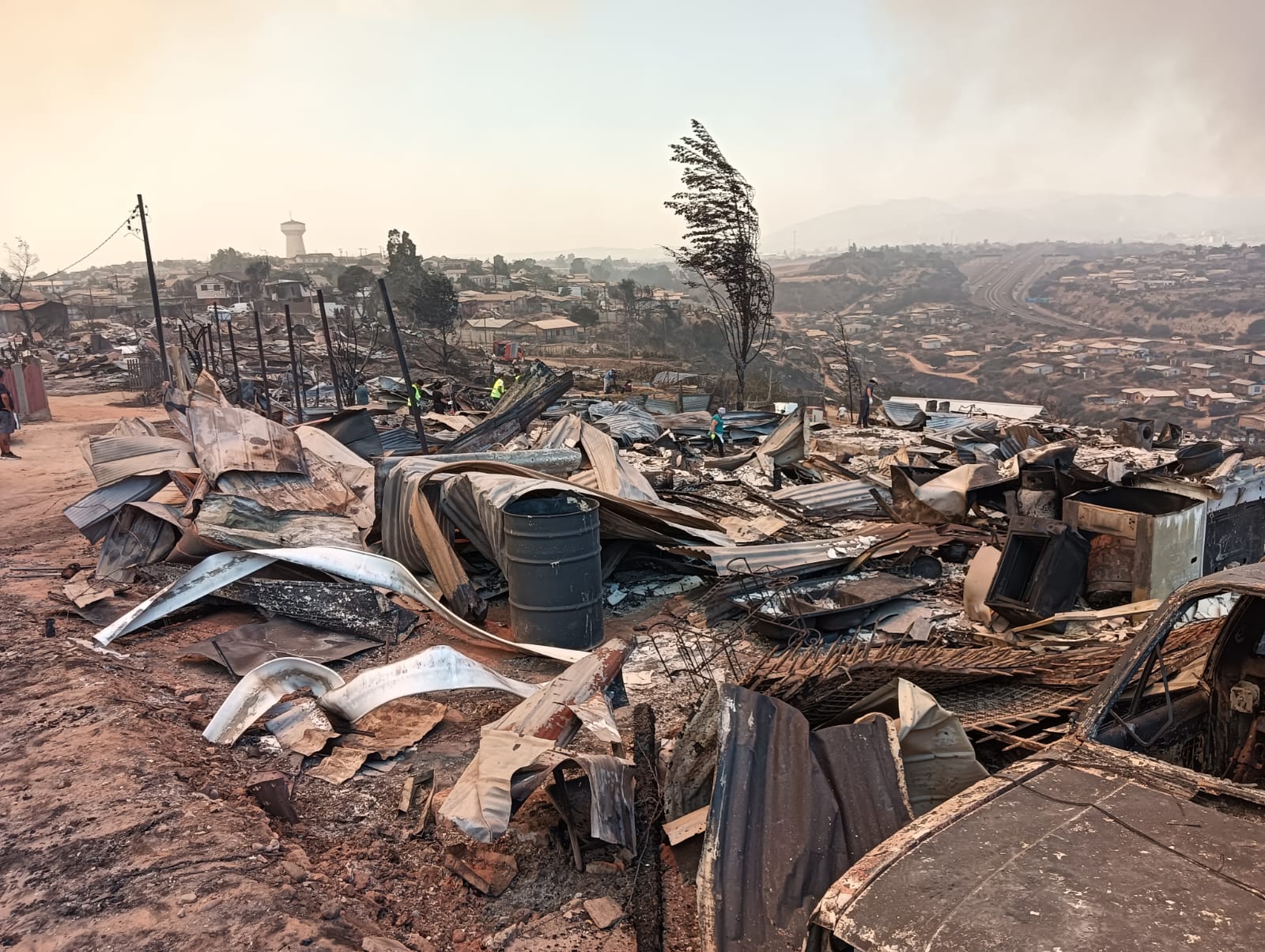1.- History, background, and context
Social, political, and institutional context in which the experience develops
Fast-growing population, extreme poverty of large numbers of urban households, and persistent deterioration of living conditions are the challenges in the poor quarters of the city of Addis Ababa which is in a rapid urbanization process like many developing cities in the world. Approximately 35% of residents do not earn enough money to cover their food requirements and thus qualify as absolute poor. It is estimated that some 40% of households in Addis Ababa are unable to adequately feed themselves and their families. However, the potential for families in cities to produce their own food using limited resources like land, water, organic fertilizers, etc. is underdeveloped.
The one thing that can provide a wealth of resource in the case of Addis Ababa is the amount of inadequately managed waste. The performance of the citys solid waste collection and disposal system is poor. It is estimated that only 60% of the 632 tons of waste produced per day is collected and disposed by the municipality, and 70% of it is organic and therefore could be transformed into compost that could be sold to generate income or used to produce vegetables for consumption and market. In the poor and densely populated kebeles, the majority of people live 0.5 1.00 km from accessible roads where transfer containers are located, when the recommended distance is 150 m from the housing units. Uncollected garbage is a serious health hazard for all especially in areas where the roads are not accessible for collection by the municipality. It causes bad smells and attracts various disease vectors and pests.
The clogged drainage ditches, frequently contaminated with excreta, often overflow. Children are particularly exposed to diseases especially diarrheas and other intestinal disorders as they come in contact with waste while playing outside the house.
ENDA-Ethiopias urban program aims at improving the quality of life in the poorer neighborhoods through improved nutrition, a cleaner environment, employment for the youth and enhanced involvement of the neighborhoods residents in managing their affairs. The living healthily in a clean and green city project aims to organize/mobilize communities to change the most critical situations of food insecurity and poor management of waste in the city of Addis Ababa in selected woredas.
Originator of the project: ENDA Ethiopia
Initiation date: April 2001
Process phases:
– Stimulate citizenship responsibilities of stakeholders at all levels in matters that concern the city through awareness-raising workshops, training, campaigns, advocacy and lobbying, etc.
– Skill-development training on appropriate solid waste management, organic vegetable production, and small-scale milk production.
– Provision of tools, seeds, and revolving funds for groups.
Current situation: the program is embarking on its second phase in 2004. Until now it was laying the groundwork for its effective implementation in selected areas. In the second stage, trained communities and groups will be encouraged to multiply their experiences within their areas with strengthened support from ENDA, and consolidating an effective methodology for replication into new locations.
2.- Objectives, strategies, and reaches
Objectives:
The specific objectives of the projects are:
– To improve the livelihoods of the urban poor in the project areas through bio-intensive gardening and strengthening small-scale dairy production.
– To lay the foundation for a sustainable waste management system that integrates community-based waste collection systems, traditional waste-recovery practices, the informal waste-recycling sector, the private sector, and services rendered by the city council.
Strategic criteria:
– For the waste management project, areas were selected with strong youth groups involved in voluntary community work, as the youth groups are the entry point to sensitize community groups in their area.
– For the urban agriculture project, groups, households, youth groups and schools are selected in poor areas. Households are not the poorest of the poor as the intensive nature of the activity has mostly discouraged this category as they have to run around to fend for their daily living.
Size of participating and beneficiary populations:
the idea is to involve the population of the entire selected areas, Woredas/ now Sub-cities. The issue of waste pertains to all inhabitants and all who share stake in the area. The project therefore strives to involve all stakeholders. In the promotion of urban agriculture, young and old, women and men are participating in the selected areas.
Territorial reach: urban ( in selected urban and peri-urban districts of Addis Abeba).
Innovative aspects:
– socio-organizational: stimulating citizens for change; engaging communities in changing their situation.
– financial: promotion of waste for livelihood.
– methodological: youth groups as catalysts of change and medium of communication with community in project areas.
3.- Actors involved and their roles
- Beneficiary population: households, youth groups/associations, schools, iddirs (2) and local authorities participate in awareness-raising workshops and capacity-building training and benefit from tools, seeds, and revolving funds.}
- Social organizations: Iddirs engaged in mobilization of communities.
- NGOs: NGOs in project areas as members of the stakeholders and partners in training.
- Government (local, national): Kebele and Woreda authorities, relevant government officials e.g health bureau, agricultural offices, NGO regulating bodies appraise program/projects, provide technical assistance and join in training provision.
- Universities: Addis Ababa University Research collaborators.
- Private initiative: Private institutions in project areas as members of stakeholders.
- International cooperation: various international organizations as financial supporters.
4.- Program or project components (brief description of how they link)
Habitat elements included in the productive process
- Utilization of limited spare land at household level to produce food such as vegetables using compost from household waste, natural pesticide and waste water.
- Encouraging youth associations to utilize idle land to set up demonstration sites for production of composts and vegetables and thereby upgrade idle land.
- Upgrade small scale milk producers barns in cities to increase their milk quality and quantity as well us reduce neighborhood pollution due to inappropriate management of the sector.
- Construction of communal public bio-latrines managed by youth groups that provide service to the public and income-generating schemes from the energy produced that is used mostly for cooking.
Social and cultural aspects
– levels and fields encompassed by social participation: participation is ensured through consultation at all levels. Communities/ stakeholders are consulted to assess their situation and prioritize problems, and they are involved in sharing tasks and responsibilities. Communities are involved in the regular monitoring and evaluation of projects.
– organizational strengthening: almost all youth groups working with the program are now officially registered local youth associations, tackling issues such as the environment and HIV/AIDS awareness. As a result they are now executing their own projects including securing funds from donors. The program has included elements that will specifically strengthen initiatives of these youth groups through creating income-generating schemes, capacity-building training, etc.
– degree of autonomy reached: neighborhood associations formed through the program are gaining autonomy and strength as a result of embarking on new areas to tackle other social issues and improve their situation.
– collaboration agreements with other actors: agreement is signed with relevant government offices, in this case with the Health bureau/now Cleaning and beautification Agency, and the Bureau of Agriculture/now Urban Agriculture Office. Although the agreement is for regulatory purposes, ENDA is closely working with these offices at all times.
– womens role; gender equity: young girls in the youth groups and schools and mothers in the households are highly involved in all activities of the program. A thorough study is scheduled to further understand the gender issue.
– consideration of cultural characteristics and practices: attention is given to enhancing existing social values and good practices and strengthening local initiatives.
Economic strengthening of the participants and/or ecological sustainability
Promotion of waste for livelihood:
– Households generating income from sale of organically grown vegetables in their backyards using household solid waste and waste water. Saving money on purchase of vegetables. As a result, some are acquiring assets, e.g household goods, and building or improving their housing.
– Bio-latrines for communal use generate income for youth groups from energy generated for cooking and compost for vegetable production.
– Improved income of small scale dairy producers as a result of improved quality and quantity of milk production.
– Employment generated for household members and youth groups involved in the program.
Contribution to urban development
The program also aims to contribute to development of the urban environment.
The process allows for all stakeholders to be involved in the planning and improvement of their neighborhood and urban image through consultative discussions in neighborhoods with all the relevant stakeholders and through their active participation in tackling the waste problem and enhancing vegetation cover of their area.
Process and integration level of the diverse components
Although the two projects of solid waste management and urban agriculture were initially run in different neighborhoods, they are now merging. The two components are therefore practiced in integration in all the project areas.
5.- Primary tools used
Socio-organizational
– Training on basic integrated solid waste management.
– Training on organic vegetable gardening (Bio-Intensive Gardening, BIG)
– Provision of training manuals, leaflets, exposure visits, and vegetable day festivals.
– Community discussions/ dialogue on issues organized by youth focus groups and CBOs, and lead vegetable groups .
Financial
– savings: groups are encouraged to form associations and start saving and
credit schemes.
– community funds: communities are asked to contribute in cash and in kind during construction.
– access to resources: international cooperation, public resources, private resources.
Legal
– legal figure adopted
– agreements
– others
Administrative and management
Promotion and dissemination
6.- Achievements and main lessons learned
Primary impacts
– on participants lives
Households and youth are now earning money from sale of vegetables.
A total change of attitude about Waste.
Employment created.
– on the community
Increased engagement in dialogue to change their situation and negotiate with local authorities to get good services.
Traditional CBOs wanting to be involved in mobilizing their members, training and disseminating waste recycling and urban agriculture techniques, raising funds to alleviate the problems of their areas.
– on environmental and urban surroundings
Although more is needed to be done to really see impact on the environment, signs are already visible as waste at source is minimized, and as the number of households increases to work on their gardens within the project areas.
– on public policy and norms
In the early days of the program the issue of Solid Waste Management was the responsibility of the municipality but no one else. And waste was only for dumping, without any economic value.
Agricultural practices in the urban areas were neglected and considered problematic.
Now:
The attitude of communities and the government is improved toward solid waste.
All stakeholders believe that they have a stake in tackling the problem of solid waste and they can do so in collaboration.
Minimization of waste at source/ at the household level is the first step advocated by the newly established city administration office of Beautification and cleaning agency.
Business enterprises are encouraged by the government and are getting involved in the waste collection and recycling venture.
A newly established office by the name Urban Agriculture office is now solely following up on agricultural activities in the urban areas which will enhance the sector.
A new land use policy that facilitates provision of idle land to groups for short-term income generating activities is encouraging youth groups who would like to start compost making and vegetable production to earn money and create employment.
– on democratic management of the city
Promoting/ encouraging local communities to dialogue with other stakeholders on issues that concern them and involving them in the decision-making process at the local level.
– on gender equity: scheduled for study.
Primary obstacles faced
– Shortage of water at household level.
– Pests
– Capacity to attend to all the demands coming from communities, NGOs, schools, youth associations, etc.
– Exaggerated demand of regulating bodies to implement programs.
Lessons provided by the experience, principles useful to other cases, reflections
1. The compost-making technology has been replicable among neighborhoods.
2. Communities are enthusiastic to learn new techniques that are easily practiced and need only minimal support such as training, and believing in their potential. If they get recognition and some support they can take over the development process.
3. The training given to households, youth groups and schools has proven to be permanent knowledge. It is observed that households that discontinue compost production and vegetable gardening for different reasons, may start again without ENDAs involvement.
4. Once communities are convinced about their potential and are able to make changes in their livelihood, they are ready to willingly contribute (in labor and money). This proved it is possible to negotiate with communities.
5. Because of group formation, communities have developed a sense of support for their group members and they help each other in difficult situations.
6. Using the youth as an entry point to the community makes communication between local communities and local authorities, government offices and NGOs much easier and more successful.
7. Liquid waste and the issue of liquid waste should be addressed.
8. Urban agriculture and waste management can be integrated. For example, organic waste can be used to prepare compost and the compost can be used as fertilizer to grow organic vegetables. Not only solid waste but also waste water produced by households can be used to grow vegetables.
9. Solid waste management in the city is still at its infant stage despite the involvement of the government and non-governmental institutions in different parts of the city. Much has to be done in collaboration to address the issue of waste management.
7.- Key words
Addis Adaba, Ethiopia, solid waste, liquid waste, livelihood, stakeholders, dialogue, participative process, collaboration with stakeholders, sustainable development, recycling, youth employment.
8.- Sources
Internal reports, papers.
9.- Contacts
ENDA-Ethiopia
P.O.Box 25718 Code 1000
Addis Ababa, Ethiopia
Tel. 2511 51 21 86
Fax. 2511 51 45 80
E-mail: enda-eth@telecom.net.et
NOTAS:
(1) Woreda is a government unit with an average population of 60,000 160,000 that regulates kebeles (lowest government administration with population size of 7,000-10,000). The program is functioning in four of the ten sub-cities in the newly restructured capital.
(2) Idder is an indigenous neighborhood association originally established to support members during mourning period/ funerals, now organizing as registered development CBOs.




